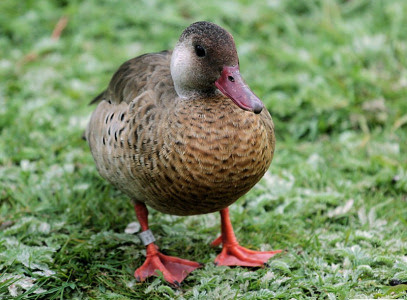Brazilian Teal

Scientific Name
Amazonetta brasiliensis
Alternative Names
Brazilian Teal, Brazilian Duck
Measurements
| Feature | Male | Female |
|---|---|---|
| Length | 38–45 cm (15–18 in) | 38–45 cm (15–18 in) |
| Weight | Around 500–600 g (1.1–1.3 lb) | Slightly lighter than males |
| Wingspan | Around 70–80 cm (28–31 in) | Around 70–80 cm (28–31 in) |
Status
This species is common and listed as Least Concern. It does not face major threats in the wild.
Identification
The Brazilian teal is a small, light brown duck. Males have bright red legs and beak, and a pale grey patch on the side of their head and neck. Females look duller, with less red on the legs and beak. Both sexes have a gentle, rounded body and dark eyes.
Voice
Their call is soft and short, often a gentle whistle or peeping sound.
Diet
They eat seeds, fruits, roots, and small insects. Ducklings mostly eat insects to help them grow quickly.
Distribution
Found widely across eastern South America—Brazil, Argentina, Uruguay, Paraguay, Bolivia, Venezuela, Colombia, Suriname, Guyana, and French Guiana.
Habitat
They prefer freshwater areas like ponds, lakes, quiet rivers, and marshes away from the coast. They like spots with thick nearby vegetation for shelter and nesting.
Breeding
Brazilian teals usually live in pairs. Both parents care for the ducklings. Nests are built close to water, hidden in grass or bushes.
Wintering
They do not migrate long distances. Instead, they move locally if water levels or food availability change.
Conservation
Their population is stable. Protecting wetlands and freshwater areas helps this species remain common.
